If you’re anything like me, you love finding toys for speech therapy that target multiple goals. Here are the toys I love and how I use them.
This post contains affiliate links. I will earn a small commission if you purchase directly from the link (but it doesn’t affect your cost).
Critter Clinic
Critter Clinic is absolutely one of my go-to toys for speech therapy. Amazon has it listed for a ridiculous cost… however, you can get it from target for a much more affordable amount.
Why do I love Critter Clinic? You can target sooo many different language concepts with this toy! Receptive and expressive language, positional words, vocabulary, requesting, answering questions, inferencing, problem-solving… you name it. Targeting articulation? Place mini objects or articulation cards in the slots!
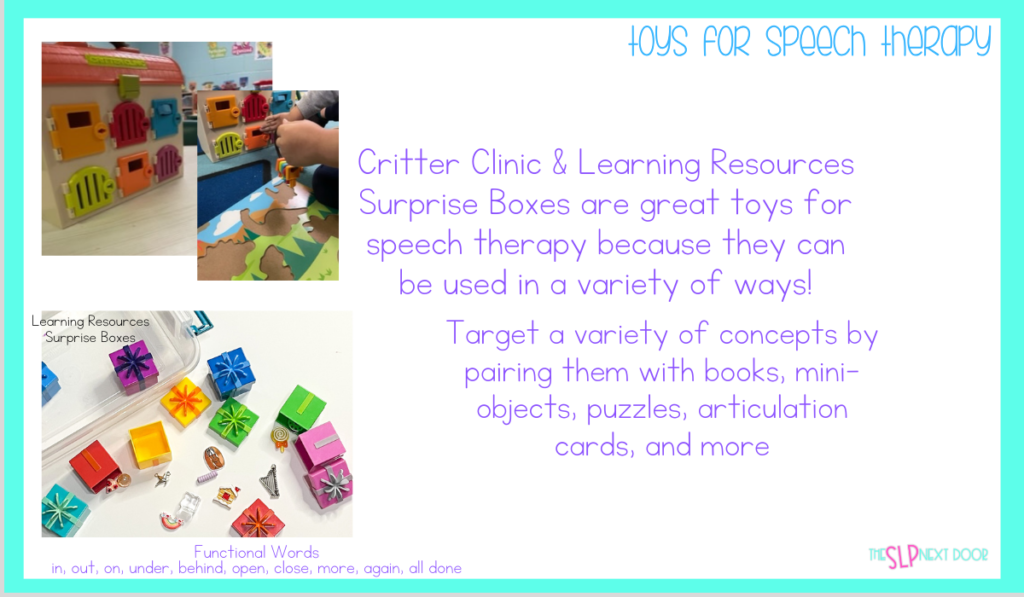
Learning Resources Surprise Boxes
Learning Resources Suprise Boxes also make my list of toys for speech therapy. I learned about this toy from an SLP on Instagram and was 100% influenced to buy it. (This turned out to be a great decision.) They can be used in various ways and target various goals. You can target vocabulary, answering and asking questions, inferencing, positional words, requesting, language expansion, following directions, initiating communication, and functional words. Use mini objects or other manipulatives to target articulation.
Farm Set
Farm sets are a great addition to toys for speech therapy because, you guessed it, they target many different goals. They target prelinguistic skills, environmental sounds, vocabulary development, language expansion, requesting, and many other language concepts. Pair farm sets with books, puzzles, and sing-song activities for even more development.
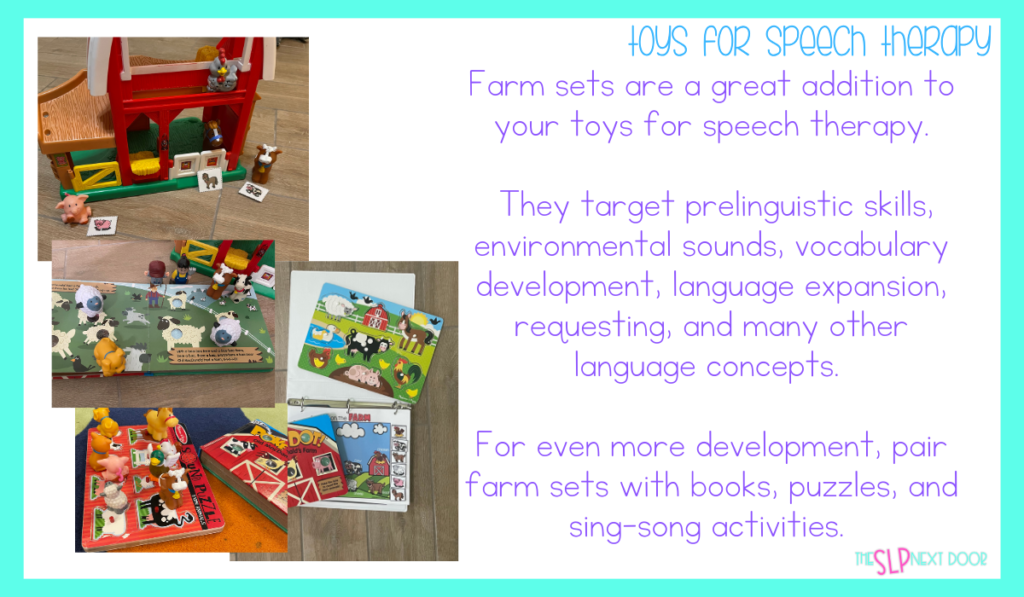
I also realize farm sets are expensive and can be challenging to find (with a decent amount of animals, at least). My suggestion is to build your farm from thrift stores and used toys. Facebook marketplace, local garage sales, and sometimes asking your neighbors can get you a variety of animals for a great price.
Laugh and Learn Piggy Bank
In addition to language development, this toy requires coordination and encourages fine motor development. Want to know what I love most about this pig? It’s easy for toddlers to use successfully. The coins are large in size and easily accessed by opening the pig’s side. The slot to return them is easily accessed by tiny fingers. It also comes with animals printed on one side of the coin and numbers on the other.
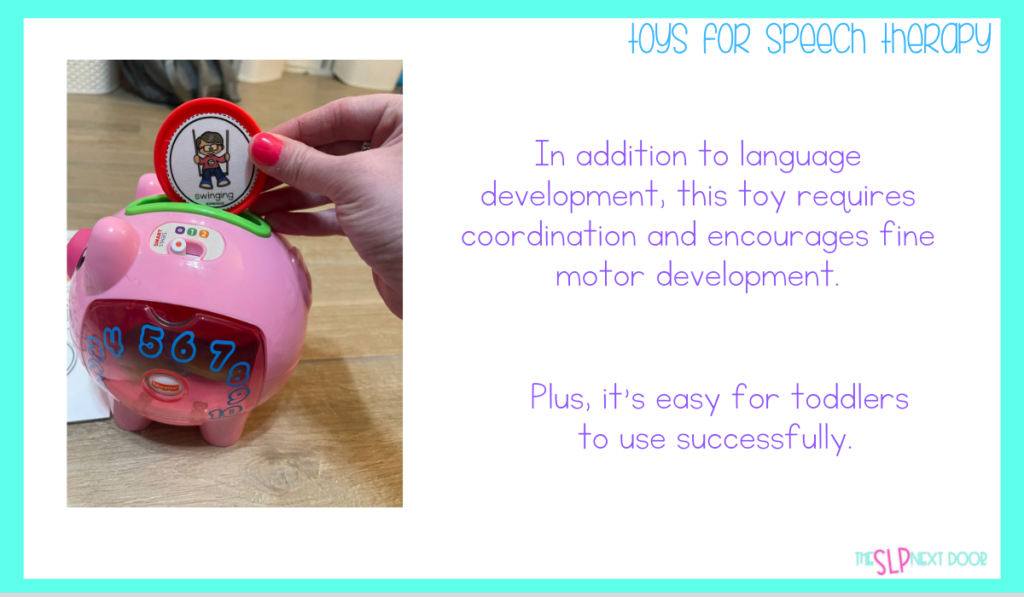
I’ve used this toy so much that I created more printable coins to help Piggy target various language concepts.
Ring Stackers, Puzzles, & Pop Toys
Anytime we can work on problem-solving in addition to targeting our goals, it’s a go for me! That’s exactly what ring stackers, puzzles, and pop-up toys can do! They require multiple motor skills and encourage language development, communication, and problem-solving.
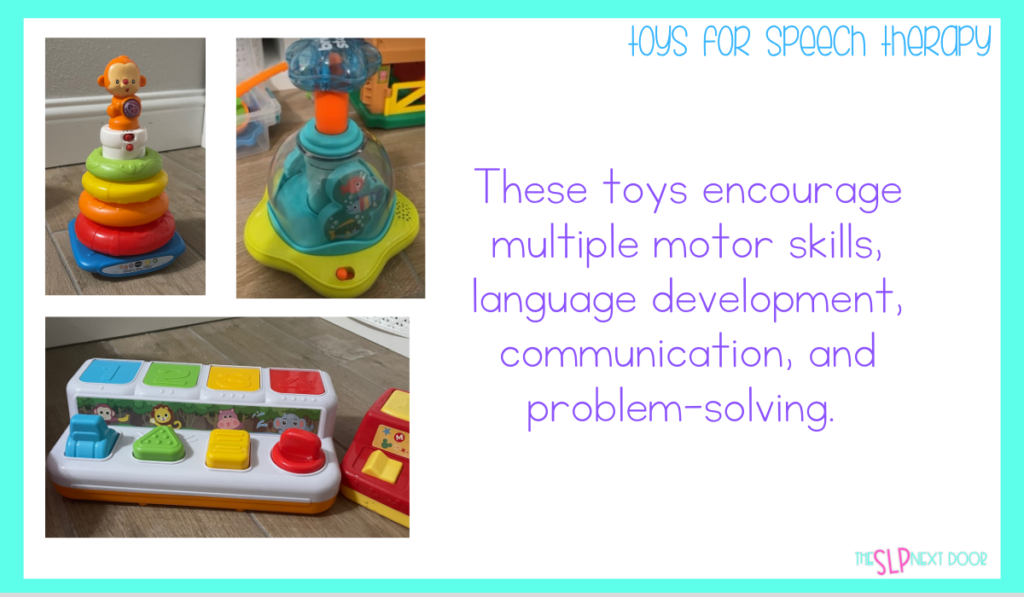
These toys for speech therapy encourage functional words, turn-taking, attention-building, fine motor skills, coordination, and vocabulary acquisition.
Books
If you’ve been around for any amount of time, you know that books are my number one resource for increasing language in toddlers. In this blog post, I do a deep dive into the best books for speech therapy. These days, you will almost always find either a Usborne or Melissa and Doug poke-a-dot book in my bag.
iPad
Finally, another speech therapy toy I must have is my iPad.
My favorite apps are
- Super Simple (these videos can also be accessed on YouTube or Amazon Music)
- Brown Bear by Eric Carle
- Tiny Hands apps
- Peek-a-Boo animals.
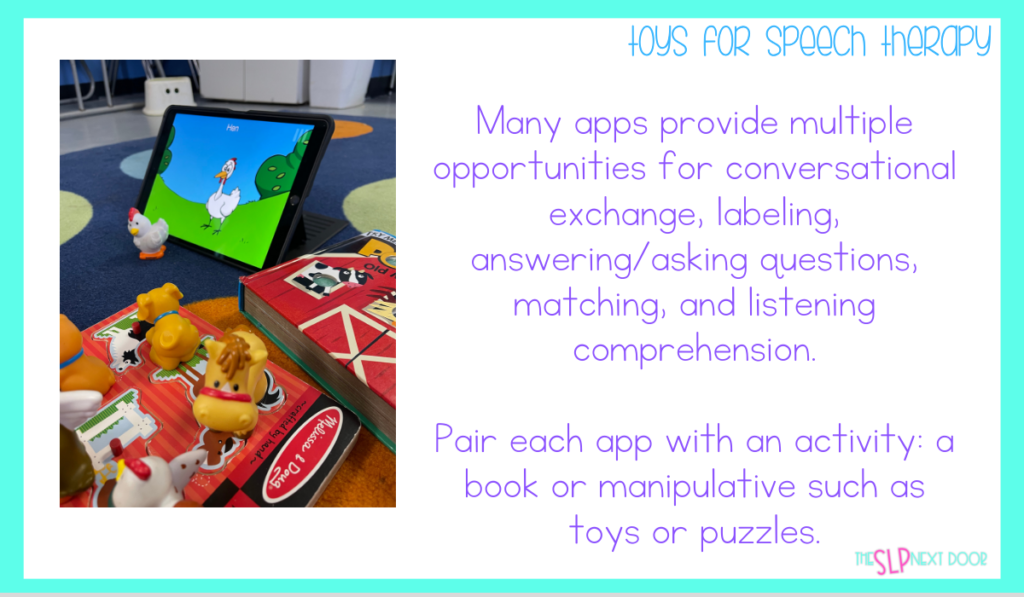
What I love about each of these apps is they’re not noisy. Most of them (except for super simple) don’t even include spoken words (peek-a-boo does have animal sounds). These apps provide multiple opportunities for conversational exchange, labeling, answering/asking questions, matching, and listening comprehension.
I pair each app with an activity: a book or manipulative such as toys or puzzles.
Should I Buy All of These?
I offered the links, and you’re welcome to purchase these toys. BUT here’s what I want you to take away from this blog post.
If you already have some toys in your inventory, ask yourself these questions:
- What is my priority for the child?
- What can I accomplish by using this toy in my speech therapy sessions?
- What are the specific goals I can target by using this toy?
- Can I use this toy to target multiple concepts with multiple children in speech therapy?
If you can provide solid answers to these questions based on your toy- USE IT! Having the latest and greatest toy on the market doesn’t make you a great therapist; being creative and finding ways to encourage the development of the toddlers on your caseload (whatever that looks like) does!
Looking for more information on speech therapy for toddlers? Check out my incredible guide to SLP Early Intervention and Speech Therapy for Toddlers: Communicate & Connect. You’ll find multiple printable resources and access to developmental milestones for language, speech development, gesture development, and fine motor skills.
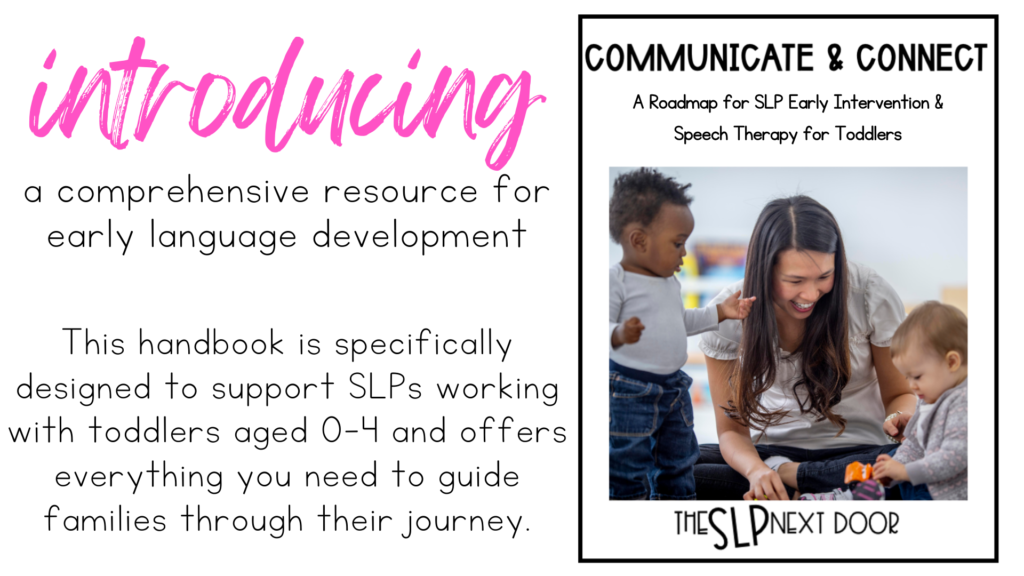


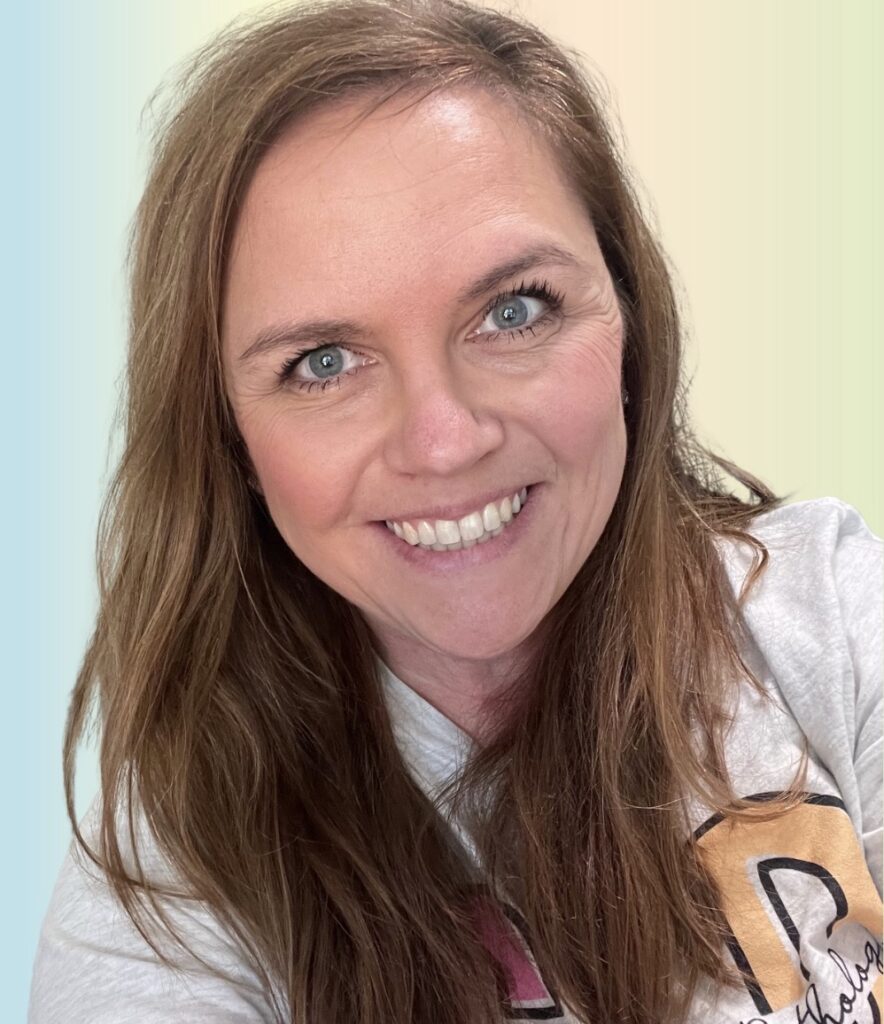
3 Responses